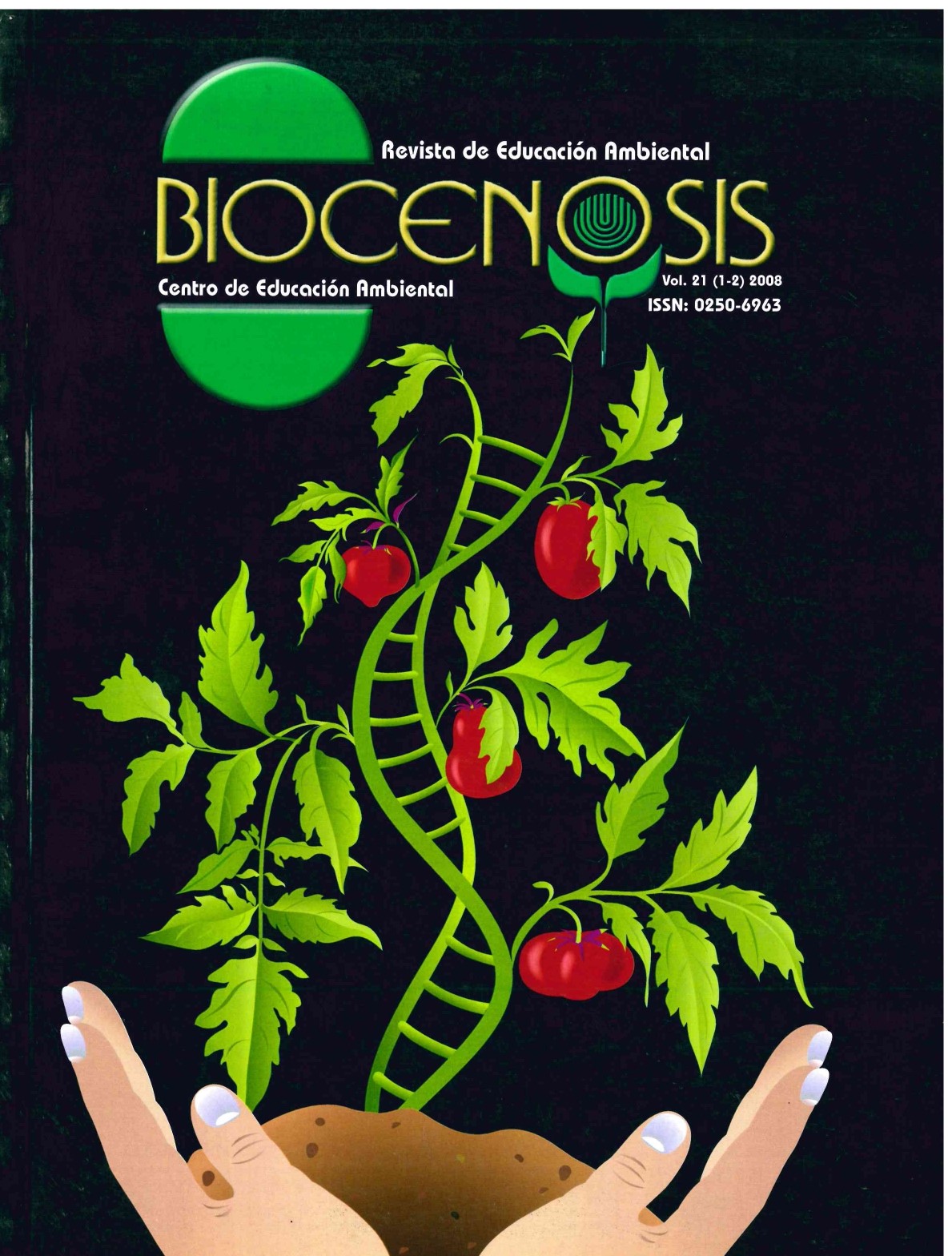Cultivos y alimentos trangénicos: una aproximación ecológica
Keywords:
Transgénicos, Agrotóxicos, Agroecología, Seguridad alimentaria, Biotecnología.Abstract
Se plantean los impactos sociales y ecológicos de la llamada revolución genética, cuya tecnología es utilizada para crear organismos genéticamente alterados, como solución a los problemas de la agricultura y el hambre mundial. Sin embargo, la comercialización de los cultivos transgénicos tienen un único fin: aumentar los mercados y beneficios privados. La gran amenaza para el ambiente y la biodiversidad que suponen los cultivos transgénicos, la mercantilización de la vida en forma de patentes de seres vivos, el robo del patrimonio genético a los países del sur, mediante la biopiratería, la privatización de la propiedad (patentes) para reproducirse y el dejar el control de la soberanía y la seguridad alimentaria mundial en manos de pocas multinacionales biotecnológicas, son algunas de las dramáticas consecuencias de la transgenización de la producción y la alimentación
References
ALTIERI, M.A. 1999. Biotecnología agrícola: mitos, riesgos ambientales y alternativas. Universidad de California, Berkeley. PED-CLADES / FOOD FIRST.
ALTIERI, M. ET ÁL. 2000. Agroecologia: bases científicas para una agricultura sustentable. Ed. Nordan- Comunidad, Uruguay.
ALTIERI, M. 2004. Genetic engineering in agriculture: the myths, environmental risks, and alternatives. (Second edition). Food First Books.
BOUCHER, D.H. (ed.). 1999. The paradox of plenty: hunger in a bountiful world. Oakland, CA: Food First Books.
BROWN, L. 1999. Alimentar a 9.000 millones de personas. La situación del mundo. Informe del Worldwath Institute. Icaria Editorial.
CENTER FOR FOOD SAFETY. 2005. Monsanto vs. U.S. Farmers. Disponible en: http://www.centerforfoodsafety.org/Monsantovsusfarmersreport.cfm
DONNEGAN, K. AND R. SEIDLER. 1999. Effects of transgenic plants on soil and plant microorganisms. Recent research developments in microbiology 3:415- 424.
FAO. 2004. Seguridad alimentaria mundial y plan de acción mundial sobre la alimentación. Roma, FAO.
GOULD, F. 1994. Potential and problems with highdose strategies for pesticidal engineered crops. biocontrol science and technology 1994; 4: 451-461.
KLOPPENBURG, J. 1998. Biotechnology to the rescue? Twelve reasons why biotechnology is incompatible with sustainable agriculture. The Ecologist 26: 61-67.
LAPPE, F.M. ET ÁL. 1998. World hunger: Twelve myths (2nd edition), New York: Grove Press. p. 270.
LEVIDOW, L. & S. CARR. 1997. How biotechnology regulation sets a risk/ethics boundary. Agriculture and Human Values 14: 29-43.
MAG. 2005. Introducción a la agricultura orgánica. Editorial del Norte, San José.pp.32.
MELLON, M. & J. RISSLER. 1999. Now or never: serious new plans to save a natural pest control. Washington, DC: Union of Concerned Scientists.
NESTLE, M. 2003. Safe food: bacteria, biotechnology and bioterrorism. University of California Press.
PENGUE, W. 2000. Cultivos transgénicos. Editorial Lugar, Argentina.
PIMENTEL, D. ET. AL. 1993.The pesticide question. Chapman and Hall. New York.
PUSZTAI, A. 2005. Pusztai answers his critics. Disponible en: http://www.organicconsumers.org/ge/pusztai112805.cfm
PUSZTAI, A. ET AL. 2003. Genetically modified foods: potential human health effects. En: Food Safety: Contaminants and Toxins (ed. JPF D’Mello) pp. 347-372. CAB International, Wallingford Oxon, Reino Unido.
RIECHMANN, J. 2000. Sobre el hambre en el mundo, el empleo y la protección ecológica: algunas falacias. Cultivos y alimentos transgénicos, una guía crítica. Los libros de la Catarata Editores.
RISSLER, J. & M. MELLON. 1996. The ecological risks of engineered crops. Cambridge, MA: MIT Press.
ROSSET, P. 1999. The multiple functions and benefits of small farm agriculture in the context of global trade negotiations. Food First Policy Brief No. 4.Oakland, CA: Institute for Food and Development Policy.
ROWELL, A. 2003. Don’t worry, it’s safe to eat: the true story of GM food. Earthscan Books.
SNOW, A.A. & P. MORAN. 1997 Commercialization of transgenic plants: potential ecological risks. Bioscience 47: 86-96.
THRUPP, L.A. 1998. Cultivating biodiversity: agrobiodiversity for food security. Washington DC: World Resources Institute.
UNION OF CONCERNED SCIENTISTS. 2004. Gone to seed: transgenic contaminants in the traditional seed supply. Disponible en: http://www.ucsusa.org/food_and_environment/genetic_engineering/gone-to-seed.html
WEBBER, D.J. (ed). 1990. Biotechnology: assessing social impacts and policy implications. Greenwood Press, Westport, CT
